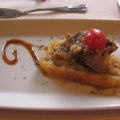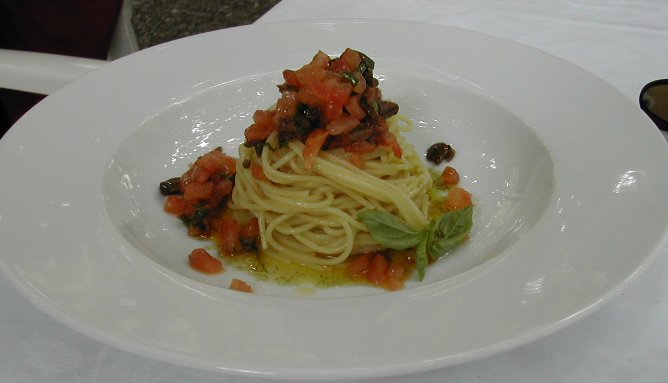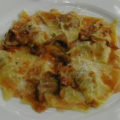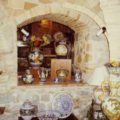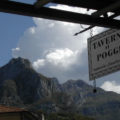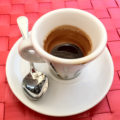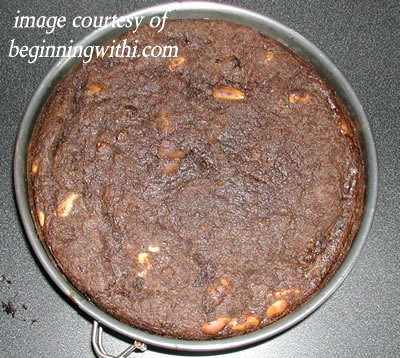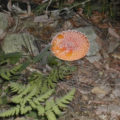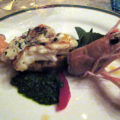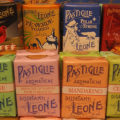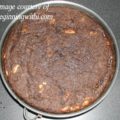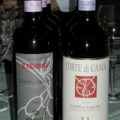House Wine
In many Italian restaurants, you can get a low-cost house wine (usually one white and one red selection) in carafes of 1/4, 1/2, or a full litre. In some places this is a decent though not stellar local wine, in others it will be something completely unrelated to the area. Personally, I’d try something local, even if you have to buy a whole bottle – local wines are part of the authentic Italian food experience. And sometimes the house wine is very special indeed.
The house wine does not necessarily have a lower alcohol content than what you get in bottles; it has whatever alcohol content is normal for that type of wine.
Is a Pizza a Meal?
A normal Italian pizza is just right for one hungry person to eat – the size of a 12-14″ plate. True Italian pizza, at least in northern Italy, bears little relation to the huge thick globby thing they call pizza in the US and, for my money, the Italian version is a lot better. It’s a thin crust with a thin layer of tomato sauce and mozzarella (usually) plus whatever else you order on it – every pizzeria has a long list of options from the classic to the bizarre, but usually you can subtract ingredients just by asking. In the better pizzerie, pizza is cooked in a wood-fired oven. Don’t settle for anything less.
Italians don’t often drink beer with meals, except with pizza. Beer may be on tap or in bottles, and is served by volume (piccola, media, grande).
About Water
Aqua gassata (pronounced “gazata”) or frizzante (“fritz-antay”) has bubbles, naturale or non-gassata does not. While tap water is safe to drink all over Italy, Italians usually drink bottled water because they prefer the taste (not because the restaurants are looking for an excuse to make you pay more). You can insist on tap water, but be aware that in most parts of Italy it is very hard (lots of calcium), and you may not like the flavor. In some mountain locales where the local water is very good, they serve that in carafes for free. Anywhere else, it can be difficult to get tap water brought to your table, but, if you want to try, ask for acqua del rubinetto.
No, gassata is not the default choice, unless for some reason your waiter has preconceived notions about foreigners. The Italian population splits pretty evenly on the gas or no-gas preference, so why would any waiter assume otherwise?
Dining “al Fresco”
NB: To an Italian, al fresco is slang for being in jail!
Weather and facilities permitting, the waiter may ask if you prefer to sit indoors or outdoors. If you want to smoke with your meal, outdoors may be your only option nowadays. Prices should be the same for a sit-down meal no matter where you sit.
Sitting or Standing
At many/most bars you will be charged more if you occupy a table, even if you fetch your drinks/snacks from the bar yourself. Bars care about rapid turnover, so they charge you more for table service. It’s a conflict of interest between tourists wanting a place to sit down and rest their feet while enjoying the human scenery around them, and bars needing to make money from the space they’re sitting in. The more desirable the location (e.g., Saint Mark’s Square in Venice), the more ridiculous the price of a cup of coffee at a table. If you just want coffee, have it standing up at a little bar on a side street. If you want to rest your feet and enjoy the view, be prepared to pay for that.
Cover and Service Charges and Tipping
Most restaurants charge coperta (the term actually refers to the place setting), a minimal (1-3 euro) cover charge which includes the cost of bread, table settings, etc. Most do not charge for service, and Italians tip only minimally. Waiting tables is a trained and valued job in Italy, and waiters make decent salaries. Of course they do appreciate any tip that you leave but, unless you’re spending more than 50 euros a head on a meal, a tip of more than 5 euros is extravagant. I usually leave 1-2 euros plus whatever loose change I want to get rid of. (NB: In the US I tip very well – several of my friends worked their way through college on tips!)
Paying the Bill
Getting the bill in an Italian restaurant can actually be an ordeal. Unlike many American restaurants, Italian restaurants are usually in no hurry to get rid of you (and most Italians would react very badly to a restaurant trying to rush them out). I don’t know why, but it can take forever to get the bill. Maybe it’s because only the restaurant owner has access to the cash register, and he/she may be busy chatting with regular customers.
Note: Restaurant recommendations are here.


